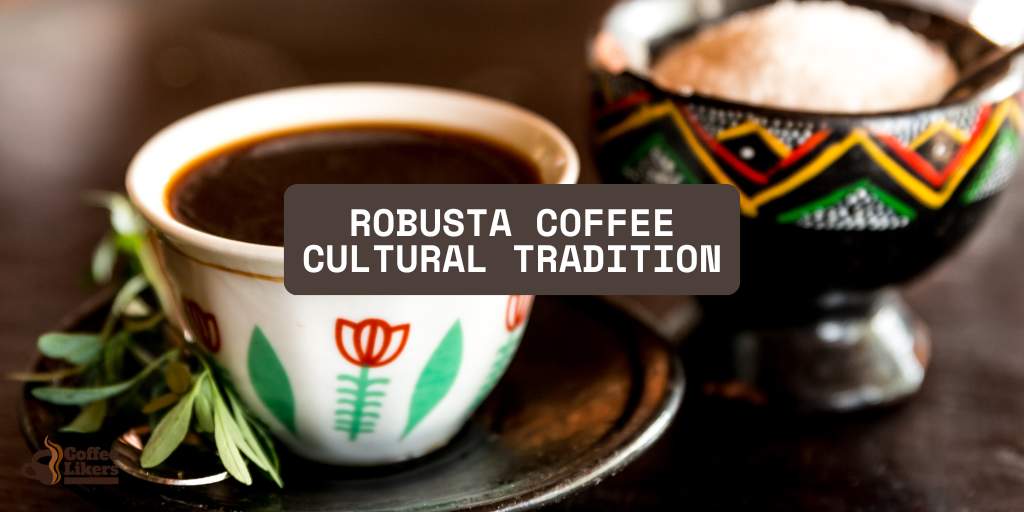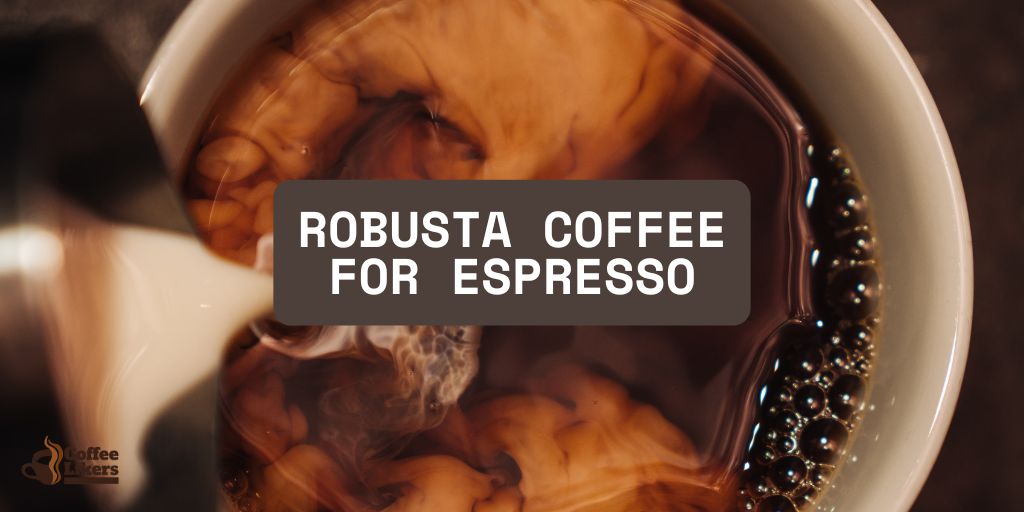Introduction
If you’re a coffee enthusiast who loves the rich and bold flavors of espresso, and looking to elevate your home brewing game, in this article, we’ll explore the best coffee for stovetop espresso maker and the world of stovetop espresso makers.
Whether you’re a morning coffee lover or enjoy a midday pick-me-up, finding the perfect coffee for your stovetop espresso maker can make all the difference in your brewing experience.
What is the best coffee for a stovetop espresso maker? The best coffee for a stovetop espresso maker is one that’s finely ground, like table salt. Look for dark roasts, such as Italian or French roasts, for bold flavor. These roasts have rich oils that work well with stovetop brewing. Experiment with different brands and blends to find the taste that suits your preferences best.
Best Coffee For Stovetop Espresso Maker: Best Coffee For Moka Pot
To make the most of your stovetop espresso maker, choosing the right coffee is the key factor. Choose finely ground coffee, similar to the texture of table salt. Dark roasts like Italian or French blends are ideal, boasting bold flavors that match the stovetop brewing process.
These coffee types have essential oils that enhance the taste. Don’t hesitate to sample various brands and blends until you discover your perfect match for a delightful experience with home espresso coffee.
The Best Ground Coffee
When it comes to the best ground coffee, freshness and flavor are paramount. Choose recently roasted beans and grind them just before brewing. Look for your preferred roast level, whether light, medium, or dark, to suit your taste. Experiment with different brands and origins to find the perfect cup for your mornings.
Medium-Fine Grind Coffee
Medium-fine grind coffee strikes the right balance for a versatile brewing experience. This grind is perfect for drip coffee makers, pour-over setups, and even some espresso machines. The medium-fine texture allows for a well-rounded extraction, capturing both flavor and aroma effectively. Enjoy a delightful cup, whether it’s a bright morning or a cozy afternoon.
What Coffee To Use In Stovetop Espresso Maker: Moka Pot Coffee
Selecting the right coffee for your stovetop espresso maker is essential for a satisfying brew. Select finely ground coffee beans with a similar texture to table salt. Dark roasts like Italian coffee blends or French blends work best, as their rich oils complement the stovetop process, resulting in a robust flavor. Inquire into various brands and blends to pinpoint the ideal coffee that caters to your taste buds and elevates your espresso-making process.
Moka Coffee Beans
Moka coffee beans, specifically designed for stovetop espresso makers, offer a rich and intense flavor profile. These beans are finely ground, ensuring optimal extraction during the coffee brewing process. When using a Moka pot, these beans result in a velvety cup of coffee that’s perfect for those who appreciate a strong and aromatic brew.
Moka Coffee Powder
Moka coffee powder is finely ground for optimal stovetop brewing. It’s tailor-made for Moka pots, ensuring a robust and flavorful espresso experience. With its convenient texture, you can easily achieve a rich cup of coffee that delights your senses every time you use your stovetop espresso maker.
The Secret To Brewing The Perfect Cup Of Espresso At Home With A Stovetop Espresso Maker: Brew Coffee
Unlocking the art of brewing the perfect cup of espresso at home lies in mastering your stovetop espresso maker. Start with finely pre-ground coffee beans, like the texture of table salt. Choose dark roasts such as Italian or French blends to complement the stovetop process and bring out bold flavors. Pack the grounds moderately into the filter, ensuring even extraction. Heat over medium-low flame, and voilà! A velvety, aromatic espresso roast that’s your delightful secret to a cozy morning ritual.
Brief Explanation Of Stovetop Espresso Makers And Their Benefits: Coffee In A Moka Pot
Stovetop espresso makers, also known as Moka pots, are compact brewing devices that offer a simple and affordable way to enjoy espresso coffee at home. They work by forcing hot water through coffee grounds under pressure, producing a strong and concentrated brew.
These makers are suitable for those who want a quick and convenient method of brewing rich coffee without the need for expensive machines. With their compact size and ease of use, stovetop espresso makers are a popular choice for coffee lovers looking to elevate their daily caffeine fixes with stovetop coffee.
The Importance Of Using The Right Coffee Beans For Optimal Results: Best Coffee Beans For Moka Pot
Using the right coffee beans is crucial for achieving the best results to make coffee in your brew. The type of beans, their roast level, and coffee grind size all play a role. Quality beans ensure rich flavors and aromas.
For instance, choosing beans tailored to a stovetop espresso maker enhances the brewing process, leading to a more satisfying and flavorful cup. Don’t underestimate the impact of selecting the right beans – they are the foundation of a truly enjoyable coffee experience for coffee drinkers with strong coffee.
Factors To Consider When Selecting Coffee Beans For Stovetop Espresso: Best Moka Pot Coffee
When choosing coffee beans for your stovetop espresso maker, a few key factors make a significant difference. Selecting a fine grind, allowing for proper extraction in the stovetop’s pressured environment. Dark coffee roasts like Italian or French are well-suited, releasing their bold flavors. Also, consider beans with a good amount of oil, as this aids in enhancing the final taste. By keeping these factors in mind, you can ensure a delightful and authentic espresso experience right at home.
Types Of Coffee Beans That Work Well With Stovetop Espresso Makers: Coffee For Moka Pot Brewing
For stovetop espresso makers, certain coffee bean types shine brilliantly. Dark roasts, like Italian or French, bring out intense flavors that complement the brewing process.
Their rich oils blend seamlessly, resulting in a robust cup. If you fancy a unique touch, explore blends with varying bean origins; they add complexity to your espresso.
For choosing finely ground beans, allowing for the right extraction. Ultimately, the beans’ choice dictates your brew’s depth with coffee, so these selections ensure a rewarding and flavorful stovetop espresso experience.

Specialty And Single-Origin Coffees For A Unique Flavor Experience
Indulging in specialty and single-origin coffees opens the door to a captivating world of unique flavors. These beans, sourced from specific regions or farms, bring distinct characteristics to your cup. From the fruity and bright notes of Ethiopian Yirgacheffe to the rich chocolate tones of Colombian beans, each origin offers a journey for your taste buds.
The meticulous cultivation and processing of these coffees contribute to their exceptional quality. If you’re seeking to elevate your coffee experience, exploring these options will reward you with a diverse and delightful array of flavors that tell the story of their origins.
The Necessary Options Of Freshness In Coffee Beans For Stovetop Espresso
When it comes to brewing a perfect cup with your stovetop espresso maker compared to the best coffee for stovetop espresso maker, the freshness of the coffee beans is an absolute must. The essential aspect is purchasing beans that are recently roasted.
This ensures that the beans retain their natural flavors and aromatic oils. Consider buying whole beans coffee and grinding them just before brewing. This preserves the beans’ freshness for a more vibrant cup.
When exposed to air, ground coffee can quickly lose its flavor. By prioritizing both recently roasted beans and on-the-spot grinding, you’re giving yourself the best shot at a truly delicious stovetop espresso experience that’s bursting with the rich and nuanced flavors locked within the beans.
Grinding Techniques For Stovetop Espresso
Mastering the art of grinding is vital for your stovetop espresso journey. Aim for a fine consistency, similar to table salt. This texture optimizes extraction, ensuring a robust and flavorful cup. Invest in a quality coffee grinder, which guarantees uniform results. Remember, timing matters too – grind just before brewing to preserve the beans’ freshness.
Avoid overly coarse grinds as they might lead to weak coffee, while too fine a grind could clog the stovetop espresso maker. By honing your grinding techniques, you’re setting the stage for an aromatic and satisfying stovetop espresso experience that delights with every sip.
Tips For Storing Coffee Beans Properly
Properly storing your coffee beans is essential to preserve their freshness and flavor. The key is to keep them away from light, moisture, air, and heat. Select an airtight container made of ceramic, glass, or stainless steel.
Avoid clear containers, as they let in light that can degrade the beans. Store the container in a cool, dark place, away from direct sunlight and heat sources like stoves. Additionally, refrain from freezing or refrigerating the beans, as moisture can damage them. By following these tips, you’ll ensure that your coffee beans retain their optimal taste and aroma for a truly enjoyable cup every time.
How To Brew The Perfect Cup Of Stovetop Espresso
Brewing the perfect cup of stovetop espresso is an art that anyone can master with a few simple steps. Start by filling the bottom chamber of your stovetop espresso maker with fresh, cold water up to the safety valve.
Next, insert the filter basket and fill it with finely ground coffee, leveling it off without pressing down. Assemble the pot and place it on a low to medium heat source. The water will gradually rise, passing through the coffee grounds and into the upper chamber as aromatic espresso.
Keep an eye on the process and remove the pot from the heat just before the bubbling sound becomes gurgling. Pour the espresso into pre-warmed cups, ideally enjoying it as soon as possible to capture the fullest flavors and aromas. With a bit of practice, you’ll craft a velvety and robust stovetop espresso that rivals your favorite café.
Exploring Different Flavor Profiles In Coffee
Diving into the world of coffee is a journey that unveils a rich tapestry of diverse flavor profiles. From the bright and citrusy notes of African beans to the deep chocolate undertones of South American varieties, each type offers a unique taste adventure.
Factors like the bean’s origin, altitude, and processing method influence these flavors. Lighter roasts tend to highlight the bean’s intrinsic characteristics, showcasing floral, fruity, and acidic tones. On the other hand, darker roasts develop richer, caramelized flavors with less acidity.
Exploring different brewing methods also contributes to the flavor spectrum. A French press might accentuate body and mouthfeel, while a pour-over might emphasize clarity.
This exciting journey allows you to discover your preference – be it the zesty tang of Ethiopian beans or the nutty sweetness of a Brazilian roast – making each cup of coffee an exploration of taste that suits your palate.
Recommendations The Best Coffee For Stovetop Espresso Maker
When it comes to selecting the best coffee for stovetop espresso maker, a few recommendations can elevate your brewing experience. Nominate dark roast coffees like Italian, French, or Espresso blends, as they possess bold flavors and rich oils that perfectly complement stovetop brewing.
Look for beans with a fine grind, ensuring optimal extraction and a velvety cup of espresso. Brands that specialize in producing beans for stovetop brewing often offer a reliable choice.
Exploring single-origin options from regions like Brazil, Ethiopia, or Colombia can introduce unique flavor profiles to your espresso. Prioritize freshness by purchasing whole beans and grinding them just before brewing. By considering these factors, you’re setting yourself up for a flavorful and aromatic stovetop espresso that rivals your favorite coffee shop’s offerings.
Mention Coffee Brands That Prioritize Sustainability And Ethical Sourcing
As conscious consumers increasingly seek sustainable and ethically sourced products, several coffee brands stand out for their commitment to these values. One such brand is “Blue Bottle Coffee,” known for its direct relationships with farmers and dedication to quality.
“Counter Culture Coffee” is another notable name, focusing on environmentally friendly practices and transparency. If you’re looking for fair trade options, “Equal Exchange” offers a range of responsibly sourced beans.
“Cafe Direct” is renowned for its ethical partnerships with smallholder farmers, ensuring fair wages and sustainable farming methods. “Bird Rock Coffee Roasters” is dedicated to both high-quality coffee and community engagement, showcasing a holistic approach to sustainability.
Lavazza Coffee is a brand of coffee that was founded in Turin, Italy in 1895. It is known for its high-quality and authentic Italian coffee blends. By supporting these brands including Lavazza qualita rossa, you’re not only enjoying a great cup of coffee but also contributing to a more ethical and eco-friendly coffee industry.
Emphasize The Importance Of Selecting The Right Coffee
Selecting the right coffee for your stovetop espresso maker is a crucial step that significantly impacts the quality of your brew. The choice of coffee beans determines the flavor, aroma, and overall experience of your espresso.
Opting for finely ground coffee with a texture similar to table salt ensures proper extraction during the brewing process. Dark roast coffees like Italian or French blends harmonize well with the stovetop method, yielding robust and bold flavors.
Investing in high-quality beans specifically designed for stovetop brewing enhances the overall result. Whether you’re a morning coffee enthusiast or someone who savors a midday pick-me-up, the right coffee choice for your stovetop espresso maker can elevate your daily ritual and offer a delightful and satisfying cup of espresso that rivals professional cafes.
Final Thought
The journey to discovering the best coffee for stovetop espresso maker or moka pot is a rewarding one. By selecting finely ground beans, embracing dark roast coffees, and exploring different brands and origins, you’re poised to create a cup of espresso that’s rich, aromatic, and tailored to your preferences.
Remember, the heart of a great stovetop espresso lies in the beans you choose. With a little experimentation and a keen palate, you can turn your home brewing into a flavorful and satisfying experience that rivals your favorite coffee shop.





Leave a Reply